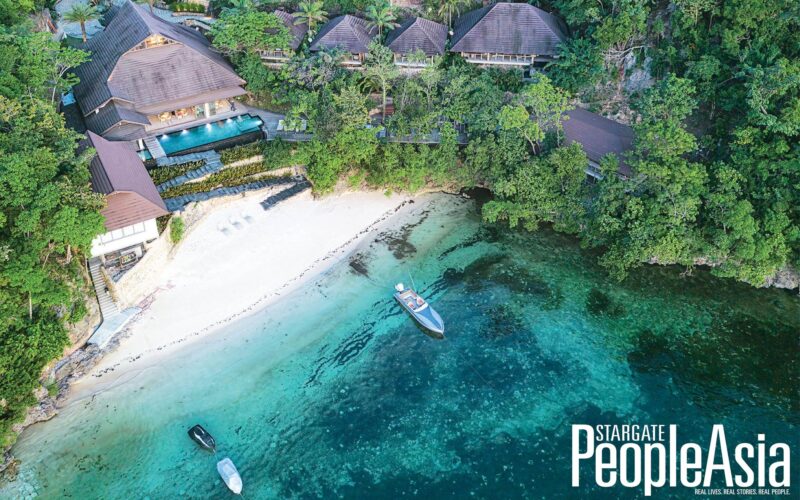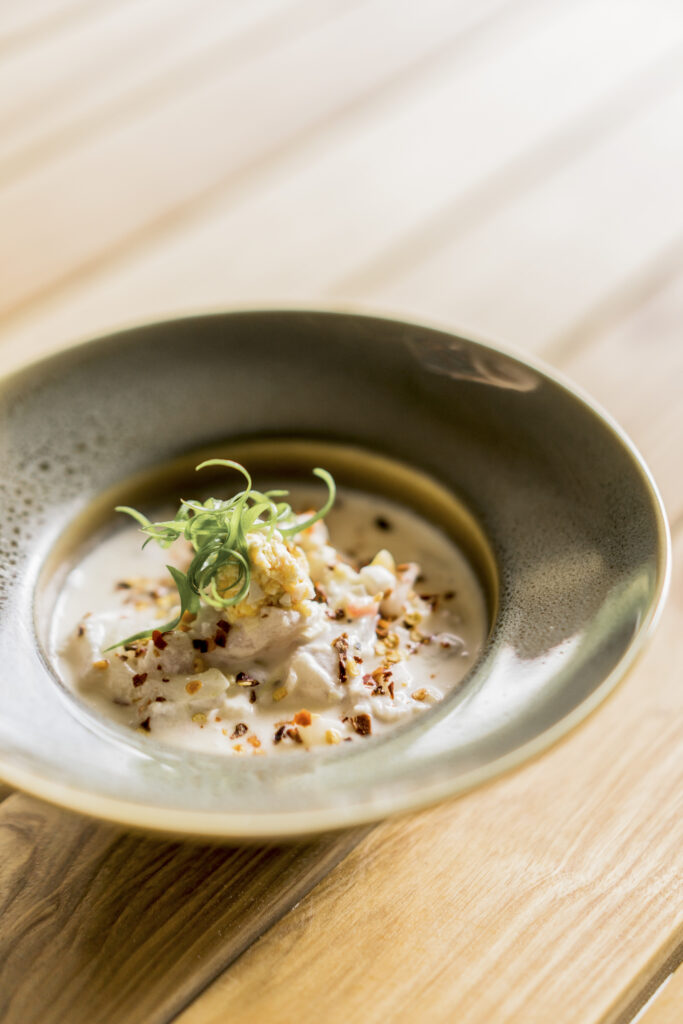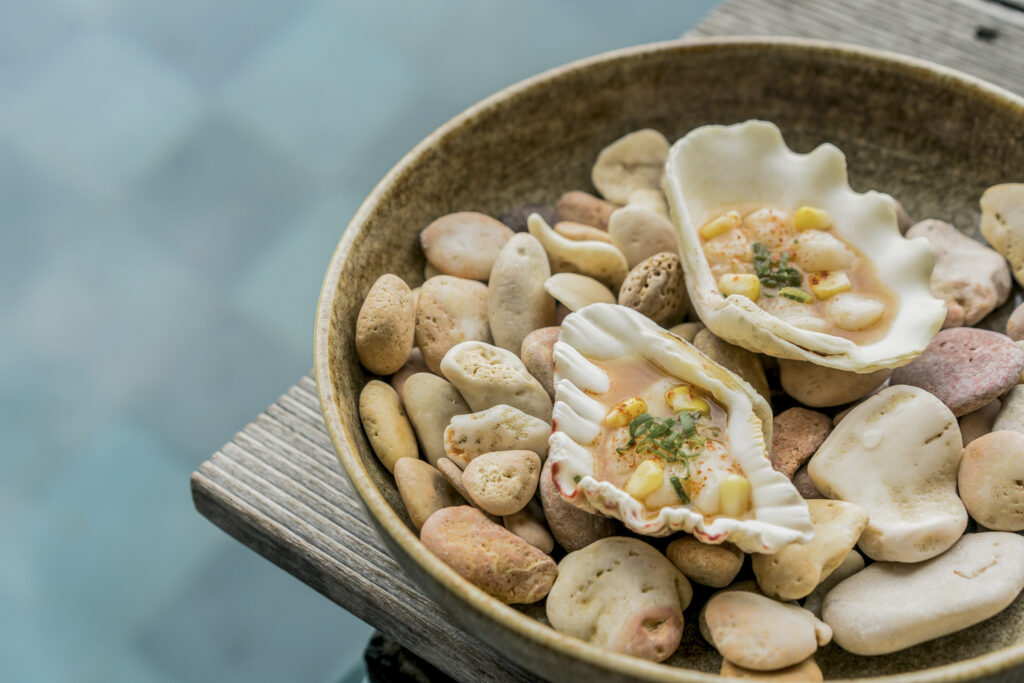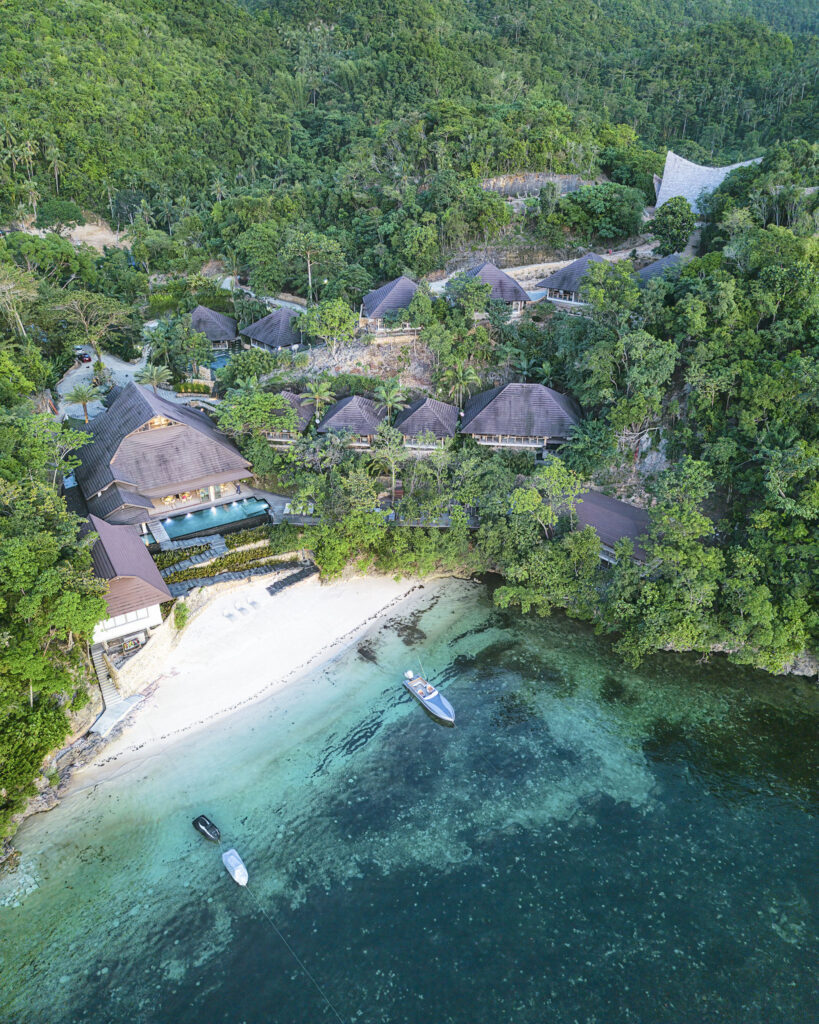By ALEX Y. VERGARA
This 16-key holiday destination consisting of villas and suites in Sipalay, Negros Occidental, offers today’s guests more than the usual sun, sea and sand. Owing to its secluded location, it has also become a font of luxury where privacy and exclusivity are premiums.
In a world that’s becoming more chaotic by the minute, no thanks to modern-day trappings such as instant communication, stream-anytime entertainment and social media, a semblance of exclusivity and isolation amidst a lush nature reserve has become one of the ultimate forms of luxury. The kind of luxury Manami Resort offers.
Located in the outskirts of Sipalay in southern Negros Occidental, and more than three hours away by land from downtown Bacolod, the 16-key Manami Resort, which opened its doors last April, is ensconced in a cove, making it, until fairly recently, one of the province’s best-kept secrets.
Hemmed in between rocky seaside cliffs and lush hills, the resort has its own private white-sand beach that, depending on the time of day or month, is partly submerged in water due to shifting tides. That its cluster of mostly single-story structures is built at varying elevations on a sloping and hilly terrain and not on flat ground further adds to the resort’s charm and Instagram-worthy appeal.
Although part of the terrain had to be carved out to give way to a network of structures connected by narrow winding roads, the resort, thanks to its owners Andrei and Cristina Corro, has gone to great lengths to preserve the bat cave nestled within the property. Together with a four-hour boat tour of Campomanes Bay, spelunking deep inside what is now referred to as Manami Cave and emerging out into the sea on the opposite end has now become one of the resort’s preferred daytime attractions.
Ocean view
Accommodations are divided between 12 suites and four villas, the majority of which provide guests with stunning views of Sulu Sea from their respective balconies. One of the most in demand accommodations for guests with big families and those who simply want to luxuriate in extra space is the resort’s lone two-bedroom villa.
But those staying in one of Manami Resort’s pool-side suites need not feel like they’re missing out on anything. Aside from being a few steps away from one of the resort’s two pools, guests staying in these suites also have easy access to Tahum poolside bar. The word manami, by the way, says property manager Giro Solatorio, is Hiligaynon for ‘good.’ Tahum, on the other hand, is one of the many ways Negrenses say ‘beautiful.’
Other Hiligaynon words that may soon find their way in the national language are Lingaw (to entertain), the resort’s all-day dining restaurant, and Linong (calm), an apt word to call its spa, which is situated on one of the highest points of the property.
The best of Negrense cuisine
Lingaw, where the resort’s main pool is also located, specializes in Western and Filipino-Negrense cuisine, including must-try regional staples such as the soulful and piping hot cansi, a rich, soupy dish that features beef shank and bone marrow soured by batuan, making it a delightful cross between sinigang and bulalo, and chicken binakol, which is the region’s version of tinola, albeit on the sweet side due to the addition of such ingredients as pristine coconut water and fleshy strips of tender coconut meat.
Negrense cooking won’t be complete without its famed chicken inasal. But the traditional way of char-grilled cooking called inasal, Bacolod-style, is not limited to chicken. At Lingaw, diners can opt for a wide selection of roasted dishes, including the freshest seafood sourced from nearby waters. And not to be missed is the chef’s version of seafood kinilao — ceviche as the Spanish call it — and pork sinugba, or char-grilled pork.
“Manami could refer to the good life or, in Tagalog, masarap na buhay,” says Giro. Having initially earned his chops in the hospitality business while working with Discovery Primea in Manila, the young hotel executive and native of Negros is an ideal fit to oversee the property. The Corros, in turn, have tapped Discovery Hospitality to manage and market their newest baby.
“Manami Resort is part of Discovery Hospitality’s ‘signature collection,’” adds Giro. It envisions to have as many key island-destinations as possible in the country hosting their respective Discovery brand.
The structures’ architecture by Negrense architect Tony Boy Legaspi is a fusion of the modern as well as the traditional, and designed to blend with and adapt to nature, says Giro. But the overall embellishments of Manami Resort’s interiors, including the selection of furniture, accent pieces and even outdoor plants, is the brainchild of Cristina, a frustrated interior designer with an eye for style and a passion for all things beautiful.
This early, the resort’s occupancy rate hovers from 70 to 75 percent. But Giro and his team composed mostly of people from Sipalay and other nearby towns and cities would be some of the happiest people in Negros if that number reaches 94 percent.
“That would mean only one room, whether it’s a suite or villa, is vacant,” says Giro. But this early, plans are afoot to add eight more keys with the construction of what he describes as Forest Rooms, which, as their name implies, are oriented towards the location’s teeming greenery. Giro expects the additional accommodations to be ready sometime next year.
Still, there’s no denying that guests are required to allot half a day or more to get to Manami Resort. Those who have the means can hire a helicopter from, say, Manila and fly directly to the resort, which has its own helipad. Those in favor of the longer, more scenic route can catch a morning flight from Manila to Bacolod, where a resort van is waiting for them. They can opt to have brunch first in one of the restaurants in the capital before embarking on the land trip to the property.
Since the drive is on long stretches of well-paved roads, one can simply sit back, relax and even sleep his way to dreamland. Before they know it, guests would already be at the main gate of the resort where Manami’s young and personable staff await them at the lobby with welcome drinks consisting of glasses of ice-cold sugarcane juice.
“Time is gold when you are on a holiday, but we make sure that every minute of our guests’ stay is worth it once they arrive at the resort,” Giro promises.
Because of the irregular terrain, cellphone signal at Manami Resort can be erratic. But not to worry, because each suite and villa, including public areas like Lingaw, is equipped with Wi-Fi. Owing to its distance, the resort doesn’t offer cable TV as well. Each accommodation, though, is equipped with a smart TV, which guests can use to sync their Netflix accounts and binge-watch all they want.
Trip highlights
One of the highlights of our recent trip to Manami Resort was a four-hour cruise onboard the Lancha 1, one of two yachts available for guests’ use. For P9,000, it can accommodate as many as 20 people. The package already includes fish-feeding, swimming, kayaking, paddleboarding and scuba-diving. For an additional P1,500 per head, guests can have lunch onboard the boat consisting of rice, sinuglao — sinugba and kinilao rolled into one — and Bacolod chicken inasal.
The trip on water took us on a tour of Tinagong Dagat, which, as its name implies, is a scenic inlet surrounded by beaches and mountains dotted with weekend homes and small family-owned resorts.
Although still part of the bigger Campomanes Bay, Tinagong Dagat could very well be in a world of its own. Thanks to its extremely calm waters, it has become an ideal shelter for smaller boats during typhoons. During low tide, however, not even the smaller Lancha 2 can enter this hidden marine playground. Jutting out from the horizon like giant emeralds, the islands that make up this part of the bay also have an uncanny resemblance to two world-famous tourist attractions in Luzon and the Visayas — the Hundred Islands of Pangasinan and the Chocolate Hills of Bohol.
Our last stop on Campomanes Bay, the tour’s cherry on top, so to speak, was at the Marine Sanctuary. This government-protected area is home to numerous types of corals and species of marine life — from the parrot and the sergeant major fish to the good-enough-to-eat grouper or lapu-lapu. We dared not test the waters, literally, by attempting to catch a grouper for lunch. Heavy fines and perhaps a dressing down from environmental authorities await violators once they’re caught red-handed.
Instead, the crew handed us fishmeal to feed the fishes. Like domesticated pets, schools of various fish who have by now grown used to human presence soon swam to the water’s surface and swarmed our side of the boat before a feeding frenzy ensued. And it wasn’t even lunchtime yet!
To provide context to the entire experience and assist guests as they suit up for kayaking, paddleboarding and scuba-diving, a “nature butler” from the hotel’s hospitality crew doubled as our tour guide.
While at Manami Resort, one of the best ways to cap off the day is a trip to Linong Spa, where a series of single’s and couple’s huts await guests atop one of the property’s hills. There, one can relax and luxuriate in the soothing sounds of nature and aroma of the spa’s signature oils, as a therapist trained in Manami’s signature massage works on whatever ails or pleases him.
To make the most out of their stay, guests can keep coming back on succeeding days and avail themselves of other treatments in Linong’s menu of services, including an entire body scrub, foot massage and the spa’s own brand of traditional hilot. If this is the lush life, we’re definitely staying a day or two longer!











